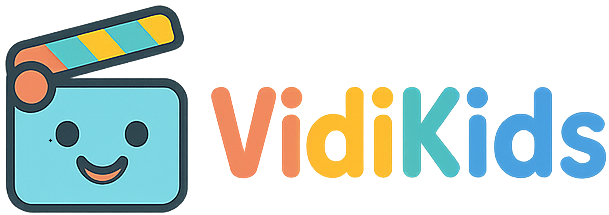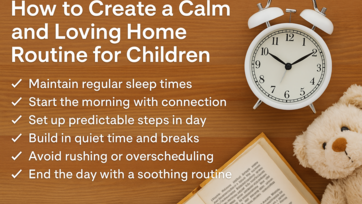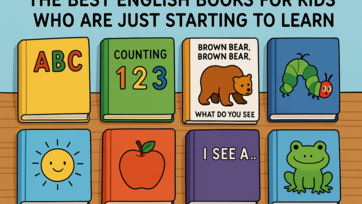Helping children learn English through games is one of the most effective and enjoyable ways to build their confidence and vocabulary. Young learners respond best to language when it's introduced through play, movement, and real-world connections. Instead of memorizing words or grammar rules, children naturally absorb language when it's part of a fun and familiar routine.
This article shares a selection of simple, engaging games that can be used at home to support English learning for children aged 3 to 8. These activities require little to no preparation and can be adapted for different language levels.

Memory Matching Game
One of the easiest and most effective ways to teach English vocabulary is through a memory matching game. This involves pairing pictures with their corresponding English words. The game helps children connect visual images with language and strengthens their memory through repetition.
To set it up, prepare two sets of cards—one with pictures (such as animals, food, or household objects) and one with the matching English words. Lay the cards face down and take turns flipping over two at a time, trying to find a matching pair.
This game works especially well for early learners because it combines focus, repetition, and play.
Simon Says
Simon Says is a classic action game that promotes listening skills and introduces English vocabulary related to actions and body parts. It's a great activity for energetic children and works well in both group and one-on-one settings.
The rules are simple: one person gives commands that begin with "Simon says..." For example, "Simon says touch your head" or "Simon says jump." If a command is given without "Simon says," and someone still follows it, they are out for that round.
This game builds listening comprehension and helps children recognize and respond to simple English instructions.
Pretend Play and Role-Playing
Pretend play is a natural way for children to explore language. Creating everyday scenarios, such as going to the grocery store, visiting a restaurant, or running a toy shop, allows children to use common phrases in context.
In a grocery store game, for example, children can practice asking for items: "Can I have some apples, please?" or "How much is this?" These phrases become meaningful when tied to imaginative play.
Role-playing also helps children practice sentence structure, question formation, and polite expressions in a low-pressure environment.
Story-Based Games
Stories are powerful tools for language learning. They offer rhythm, repetition, and familiar vocabulary. To make story time more interactive, try turning reading into a game.
One option is to stop at key points in the story and ask prediction questions such as, "What do you think will happen next?" You can also ask children to point out objects in the illustrations or repeat simple phrases after you.
Another idea is to leave out a word in a sentence and let the child fill in the blank. These small changes can turn a passive reading experience into an active learning opportunity.
Scavenger Hunt with English Clues
A scavenger hunt is an exciting way to combine physical activity with language learning. Hide objects around the house or garden and give simple English clues to guide children toward each item.
Examples of clues include:
-
"Look under the table"
-
"Find something red in the kitchen"
-
"Go to the place where we keep shoes"
As children search, they listen for meaning and respond to English instructions. This kind of game makes language practical and memorable.
Craft Activities with Language
Arts and crafts time can easily be turned into an English-learning opportunity. As children cut, glue, color, and build, give them simple instructions in English.
Phrases like "Draw a circle," "Use the red paper," or "Glue the star on the card" introduce colors, shapes, and commands. Through repetition and context, children begin to associate words with actions and objects.
These sessions can be calm and focused, offering a different pace from movement-based games.
Songs and Actions
Many English learning songs for children include movement and repetition. Songs such as "If You're Happy and You Know It," "The Wheels on the Bus," or "Old MacDonald Had a Farm" reinforce vocabulary and sentence patterns.
Add a small twist by pausing the song and asking what comes next, or encouraging children to make up new verses. This type of activity supports memory, pronunciation, and rhythm, and often leads to spontaneous singing outside of lesson time.
Using Apps and Videos Mindfully
While screen time should be limited, there are several apps and videos designed specifically for young English learners. Look for interactive tools that involve listening, repeating, and responding—rather than just watching.
A few things to keep in mind:
-
Set clear time limits (e.g., 15–20 minutes per session)
-
Choose age-appropriate content with clear visuals and slow speech
-
Avoid overly gamified apps that prioritize scoring over learning
Used in moderation, digital resources can be a helpful supplement to real-world interaction.
Tips for Parents Supporting Language Learning
-
Use simple English phrases in everyday routines, such as "Put on your shoes" or "Let’s wash your hands."
-
Repeat key words often, especially in context.
-
Be patient—language takes time, and progress may come in small steps.
-
Celebrate small wins, like remembering a new word or using a phrase independently.
-
Make it fun. The more children enjoy the process, the more likely they are to keep learning.
Final Thoughts
Games make language learning accessible, low-stress, and enjoyable. For young children, play is more than just fun—it's how they make sense of the world. By using games to introduce English, parents and caregivers can create meaningful learning experiences without pressure or formality.
Consistency, variety, and encouragement go a long way. Whether it's through a song, a scavenger hunt, or a role-playing game, every small interaction in English builds understanding and confidence.
No special materials are needed—just time, creativity, and a willingness to join the child in learning through play.
; ?>







